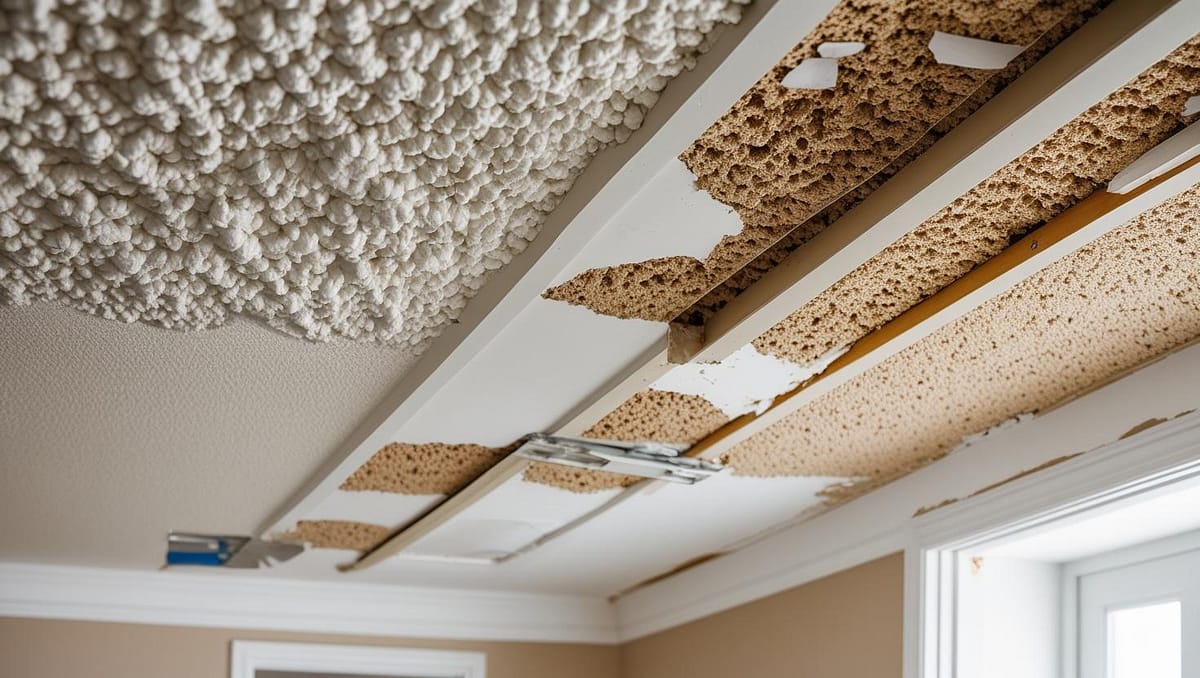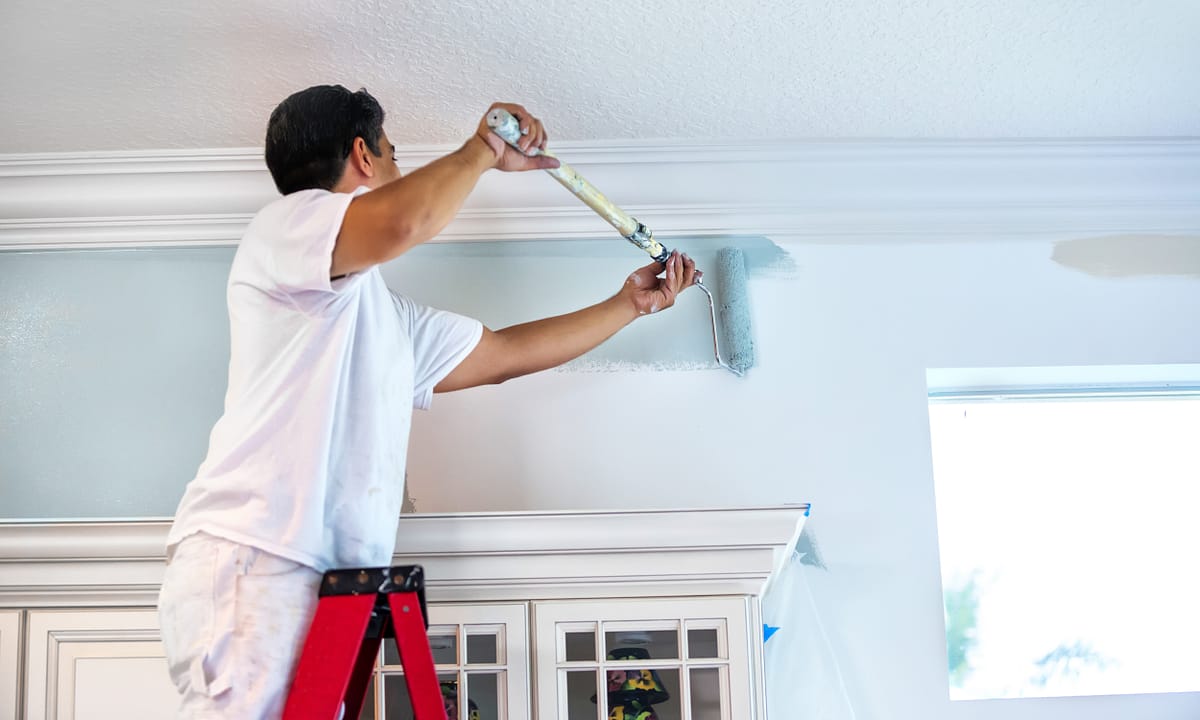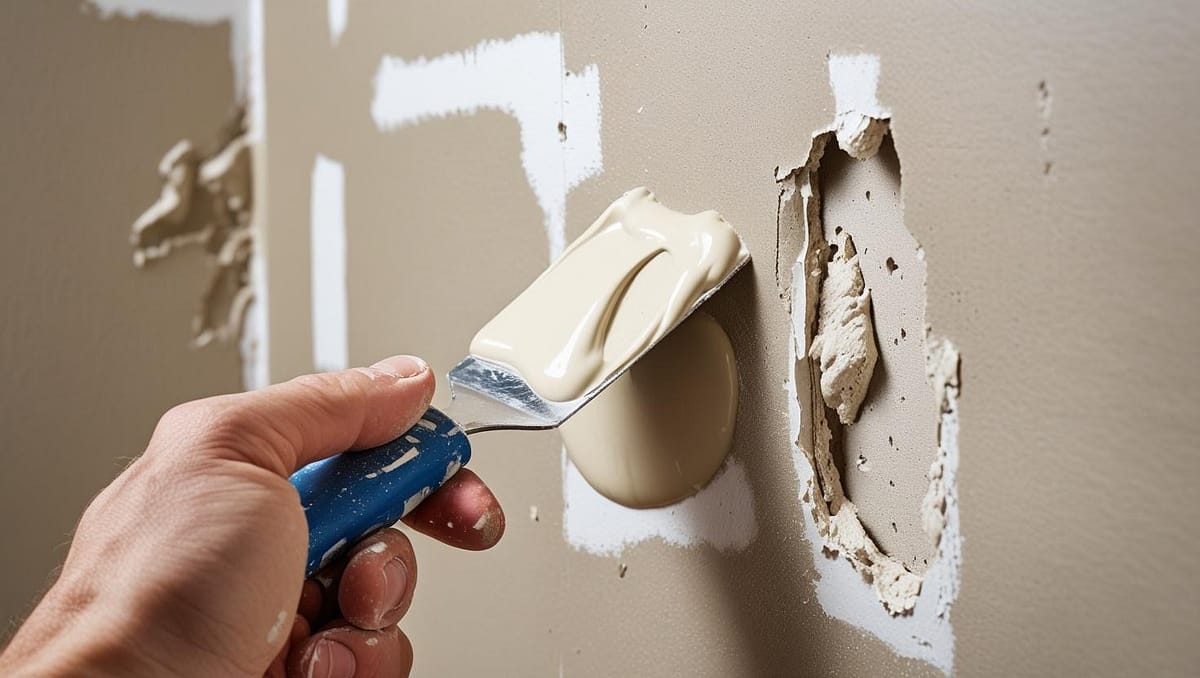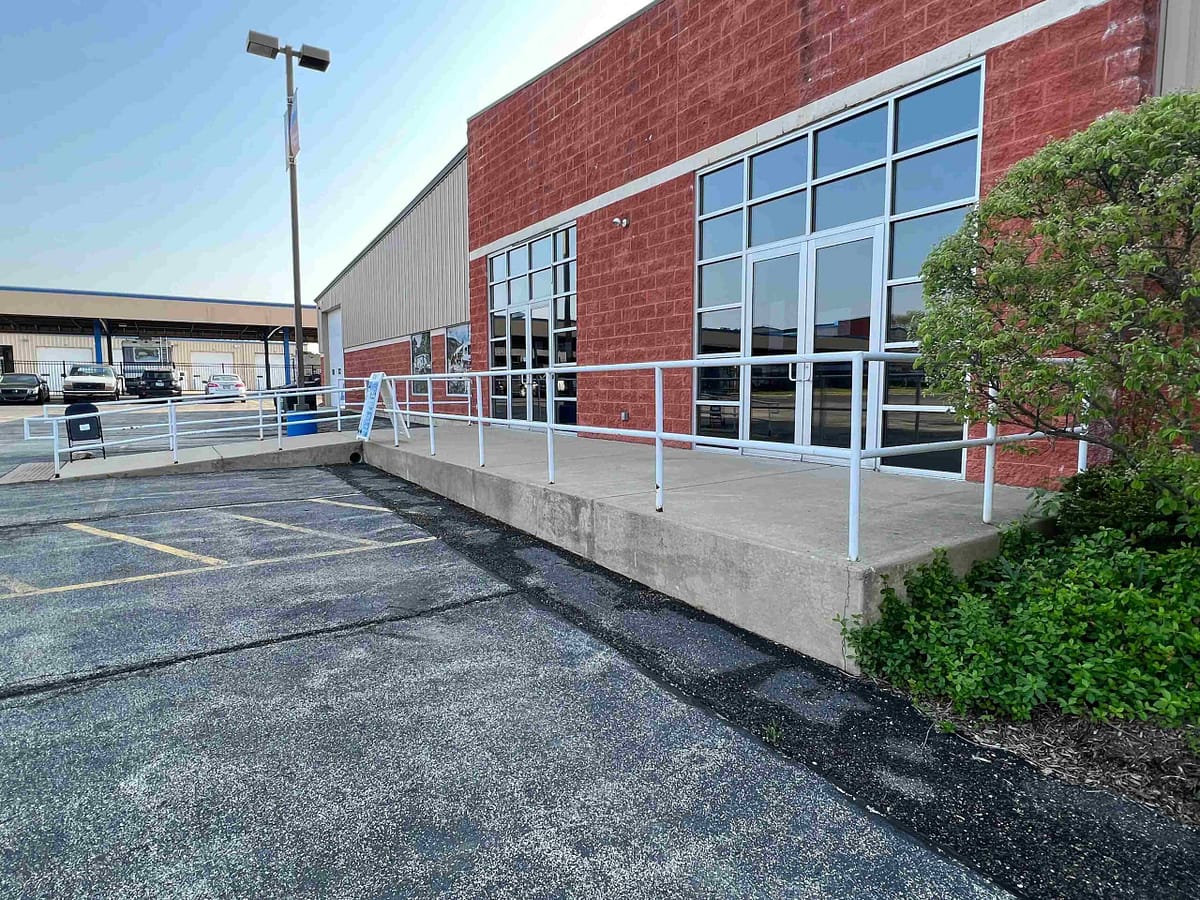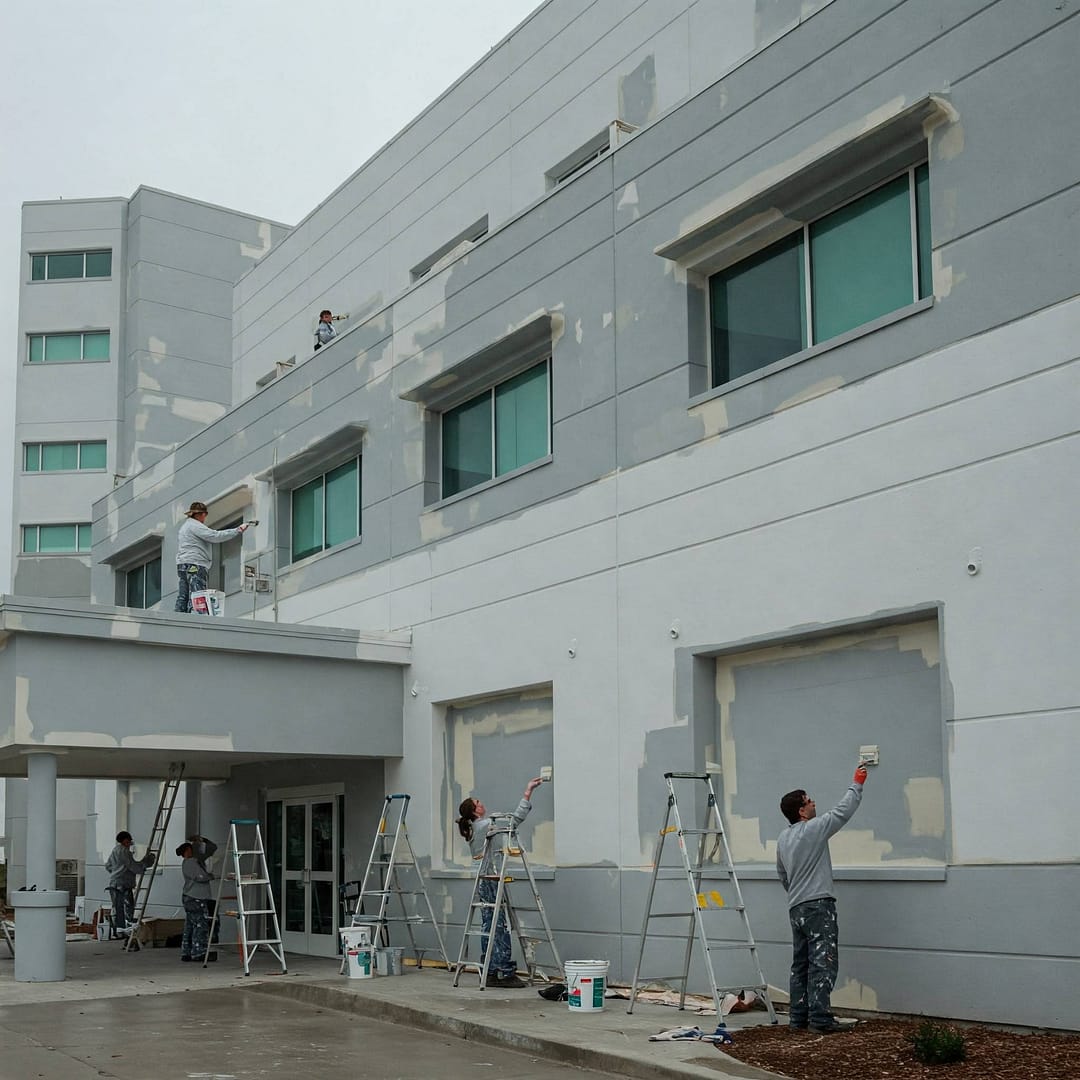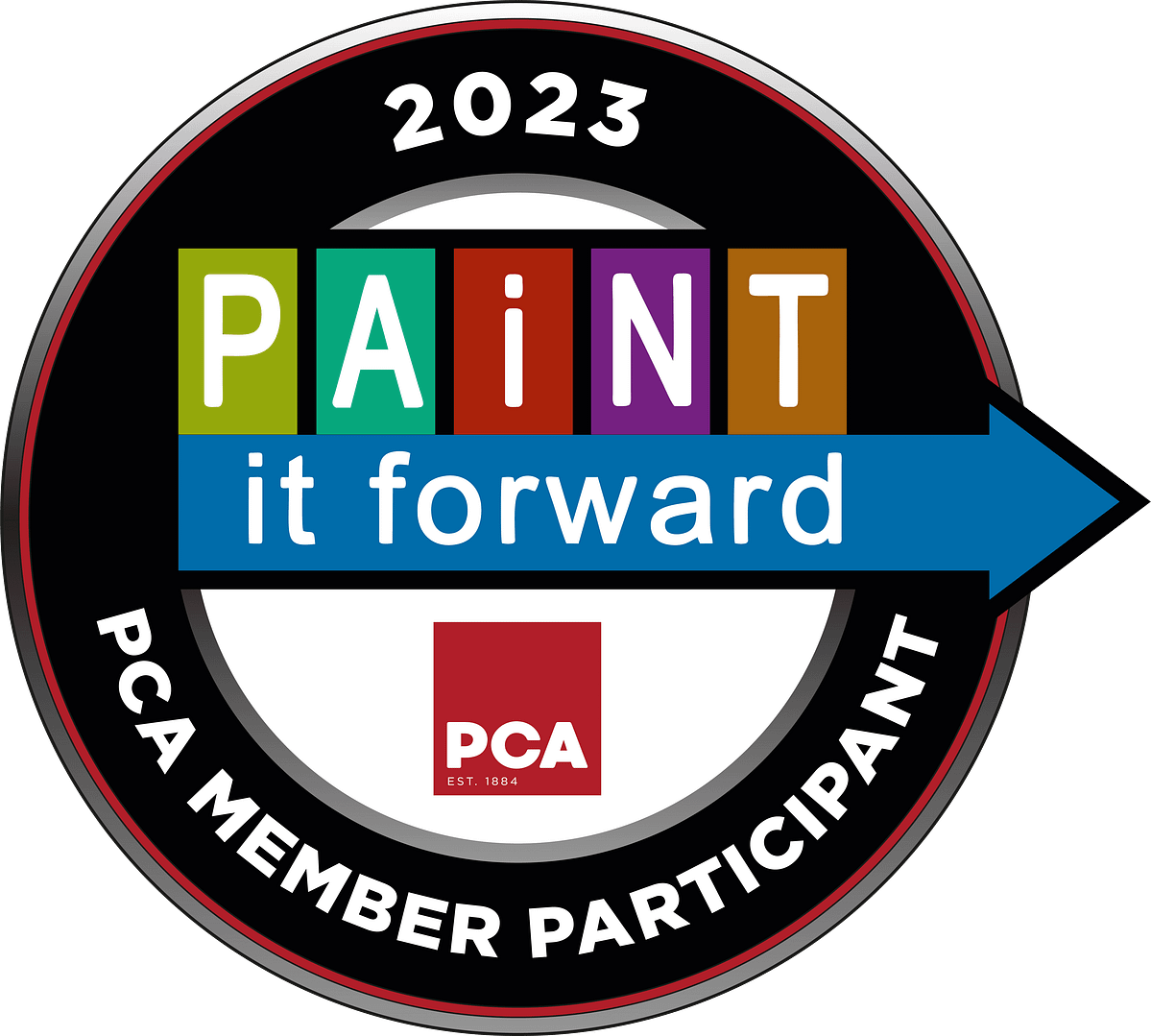Step-by-Step Guide to Removing Popcorn Ceilings Safely
Justin Leibach
on
July 11, 2025
Popcorn ceilings, once a popular design choice in homes, are now often considered outdated and may even pose health risks due to potential asbestos content. Removing them can modernize your space and increase your home’s value, but it requires careful planning and execution. This step-by-step guide to removing popcorn ceilings safely is designed for homeowners considering a DIY approach. We’ll cover the necessary tools, safety precautions, and detailed instructions to ensure a smooth and safe process.
Why Remove Popcorn Ceilings?
Before diving into the how-to, let’s explore why you might want to remove popcorn ceilings:
- Aesthetic Upgrade: Smooth ceilings create a modern, clean look that appeals to homebuyers.
- Health Concerns: Popcorn ceilings installed before the 1980s may contain asbestos, a hazardous material linked to respiratory issues.
- Improved Lighting: Smooth ceilings reflect light better, brightening your space.
- Easier Maintenance: Popcorn textures collect dust and are harder to clean.
By removing popcorn ceilings, you can enhance both the safety and style of your home. However, this project demands caution, especially if asbestos is a concern. Let’s get started with the process.
Step 1: Test for Asbestos
Before touching your popcorn ceiling, test for asbestos, especially if your home was built before 1980. Asbestos is a serious health hazard when disturbed, and DIY removal may not be safe if it’s present.
- How to Test:
- Purchase an asbestos testing kit from a hardware store or online.
- Wearing gloves and a mask, carefully scrape a small sample (about 1 square inch) of the ceiling texture into a sealed plastic bag.
- Send the sample to a certified asbestos testing lab (follow kit instructions).
- What to Do if Asbestos is Found:
- Do not attempt DIY removal. Hire a licensed asbestos abatement professional to handle the removal safely.
- Asbestos removal costs can range from $1,500 to $3,000, depending on the area.
If the test confirms no asbestos, you can proceed with confidence. Always prioritize safety when dealing with older homes.
Step 2: Gather Tools and Materials
Having the right tools and materials is crucial for efficient and safe popcorn ceiling removal. Here’s what you’ll need:
- Tools:
- Wide putty knife or drywall scraper (6-10 inches)
- Spray bottle or garden sprayer
- Step ladder
- Paint roller and extension pole (optional for applying water)
- Drywall sander or sanding pole
- Utility knife
- Materials:
- Plastic sheeting (to cover floors and furniture)
- Painter’s tape
- Drywall joint compound (for repairs)
- Primer and ceiling paint
- Warm water
- Safety Gear:
- N95 respirator mask
- Safety goggles
- Disposable coveralls
- Gloves
- Shoe covers
Pro Tip: Renting a drywall lift or pole sander from a hardware store can save time and reduce strain for larger projects.
Step 3: Prepare the Room
Proper preparation minimizes mess and protects your home. Popcorn ceiling removal is messy, so take these steps to set up:
- Clear the Room: Remove all furniture, rugs, and decor. For items too heavy to move, cover them tightly with plastic sheeting.
- Cover Floors and Walls: Lay plastic sheeting over the entire floor and secure it with painter’s tape. Cover walls and windows to contain dust and debris.
- Turn Off HVAC: Shut off your heating or air conditioning system to prevent dust from spreading through vents.
- Remove Light Fixtures: Take down ceiling lights or fans, or cover them securely with plastic and tape.
- Set Up Ventilation: Open windows and use a fan to improve airflow, but avoid directing it at the ceiling to prevent dust spread.
Safety Note: Wear your N95 mask, goggles, and coveralls during prep to protect against dust, even if asbestos isn’t present.
Step 4: Wet the Ceiling
Popcorn texture is easier to remove when wet, as it softens the material and reduces dust. Follow these steps:
- Fill a Spray Bottle or Garden Sprayer: Use warm water for better absorption.
- Work in Small Sections: Divide the ceiling into 4×4-foot sections to avoid over-wetting.
- Lightly Mist the Ceiling: Spray water evenly, letting it soak for 10-15 minutes. The texture should feel soft but not dripping.
- Test a Small Area: Scrape a small section to ensure the texture comes off easily. If it’s too hard, apply more water and wait longer.
Avoid soaking the ceiling, as excessive water can damage the underlying drywall or cause mold growth.
Step 5: Scrape Off the Popcorn Texture
With the ceiling prepped and softened, it’s time to remove the popcorn texture:
- Use a Wide Putty Knife or Scraper: Hold the scraper at a 30-degree angle to the ceiling and gently push to remove the texture.
- Work in Small Sections: Scrape one 4×4-foot area at a time, re-wetting as needed.
- Collect Debris: Let the texture fall onto the plastic sheeting below. Use a trash bag to collect debris periodically.
- Be Gentle: Avoid gouging the drywall underneath. If the texture resists, apply more water.
Pro Tip: For stubborn areas, use a paint roller to apply water more evenly, then scrape again after a few minutes.
Step 6: Repair and Smooth the Ceiling
After removing the popcorn texture, the ceiling may have imperfections. Here’s how to achieve a smooth finish:
- Inspect for Damage: Look for gouges, dents, or exposed drywall tape.
- Apply Joint Compound: Use a putty knife to spread a thin layer of drywall joint compound over damaged areas. Let it dry for 24 hours.
- Sand the Ceiling: Use a drywall sander or pole sander with fine-grit sandpaper (120-150 grit) to smooth the surface. Wear your mask and goggles to avoid inhaling dust.
- Repeat if Needed: Apply additional layers of joint compound and sand until the ceiling is smooth.
Safety Note: Dispose of all debris and plastic sheeting in sealed bags to prevent dust spread.
Step 7: Prime and Paint
To complete the transformation, prime and paint the ceiling:
- Apply Primer: Use a high-quality drywall primer to seal the surface and improve paint adhesion. Apply with a roller for even coverage.
- Let it Dry: Allow the primer to dry fully (typically 4-6 hours, check product instructions).
- Paint the Ceiling: Choose a flat or matte ceiling paint for a smooth, non-reflective finish. Apply at least two coats, allowing drying time between coats.
Pro Tip: Consider a paint with mold-resistant properties, especially in humid areas like bathrooms.
Safety Precautions to Follow
Removing popcorn ceilings can expose you to dust and potential hazards. Keep these precautions in mind:
- Wear Protective Gear: Always use an N95 mask, goggles, gloves, and coveralls to avoid inhaling dust or getting debris in your eyes.
- Ventilate the Area: Keep windows open and use fans to maintain airflow.
- Avoid Electrical Hazards: Turn off power to the room if working near light fixtures or outlets.
- Dispose of Waste Properly: Seal all debris in plastic bags and dispose of it according to local regulations.
- Test for Asbestos: Never skip this step for older homes to avoid health risks.
When to Call a Professional
While DIY popcorn ceiling removal is manageable for many homeowners, certain situations call for professional help:
- Asbestos Presence: If asbestos is detected, hire a licensed abatement contractor.
- Large Areas: Ceilings over 500 square feet may require professional equipment and expertise.
- Complex Ceilings: Vaulted or textured ceilings with intricate designs can be challenging for DIYers.
- Time Constraints: Professionals can complete the job faster, often in 1-2 days.
Professional removal costs $1-$3 per square foot, but it ensures safety and quality results.
Conclusion
Removing popcorn ceilings is a rewarding DIY project that can transform your home’s look and feel. By following this step-by-step guide to removing popcorn ceilings safely, you’ll be equipped with the knowledge, tools, and precautions needed to tackle the job confidently. Always prioritize safety by testing for asbestos, wearing protective gear, and preparing the room thoroughly. If the project feels overwhelming or asbestos is present, don’t hesitate to call a professional.
Ready to modernize your space? Grab your tools and start scraping… your smooth, stylish ceiling awaits!

